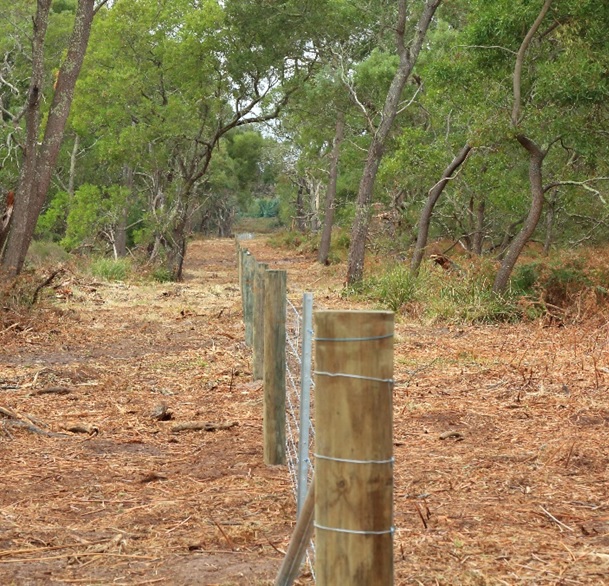First things first… defining the boundaries at Walker Swamp, and other on-ground news from Greg Kerr
Thirteen kilometres of fencing, twenty years of neglect, a large kangaroo population, senescing Blackwood trees and a rapidly approaching end of financial year add up to a potent mix. Following a two-day audit of the boundary fences it was evident that we had a challenge ahead. In many locations simply finding the fence proved to be the first challenge. Two-metre-high tangles of bracken interwoven with fallen trees, holes and canopy are surprisingly effective at hiding a fence that has long ago laid down on the ground. Having literally tripped over it in the first place and spent a day finding and marking it, the next challenge was to pull it all up before we could clear a new line.
Enter willing, fearless volunteers (Fred Aslin and Dave Lawson) and a few solid days later clearing of a fence line and construction can begin!
This has been the pattern for a month now and the rapid construction of new fence lines by Dale Collins Fencing (see below) has been followed by an extensive repair effort. Again, Fred and Dave ably supported by Jeanette Aslin and Andy Lines have put in some significant hours restoring fence line damaged by fallen trees, kangaroo impact, rust and rotten posts.
All this recent activity now means we have securely fenced and gated boundaries for the new reserve, for the first time!
A walk along this new eastern boundary has also produced some highlights with Pink Robin, Scarlet Robin, Flame Robin and Eastern Yellow Robin all seen within the first 500 m.
The next challenge is adapting and upgrading the remaining fence line to address three challenges: effectively keeping stock in or out; dealing with ongoing kangaroo impact; and – also crucially – enabling movement of young brolga between wetlands (noting that research by Inka Veltheim has demonstrated that young brolga typically feed on three or four wetlands in close proximity before they fledge).



